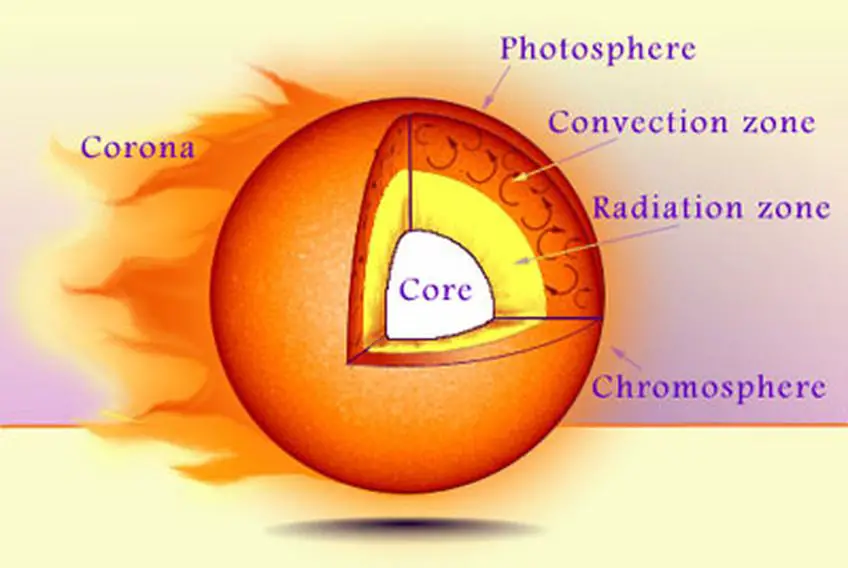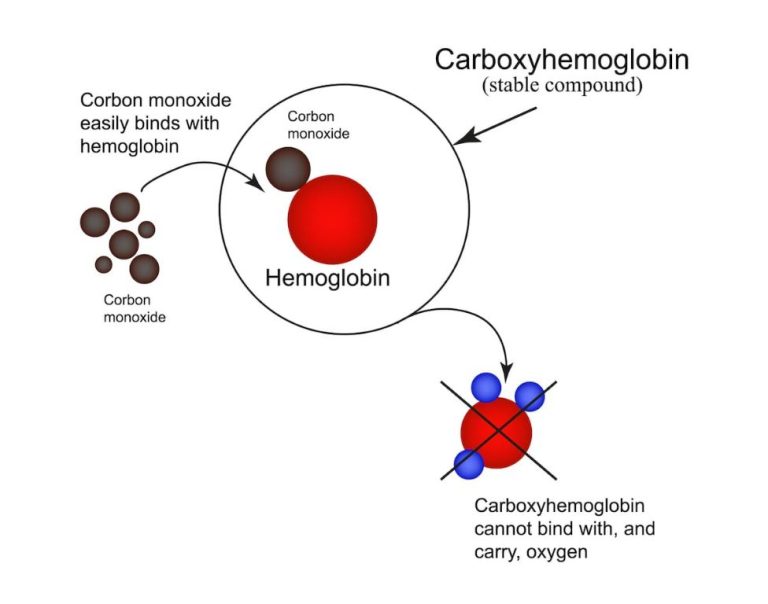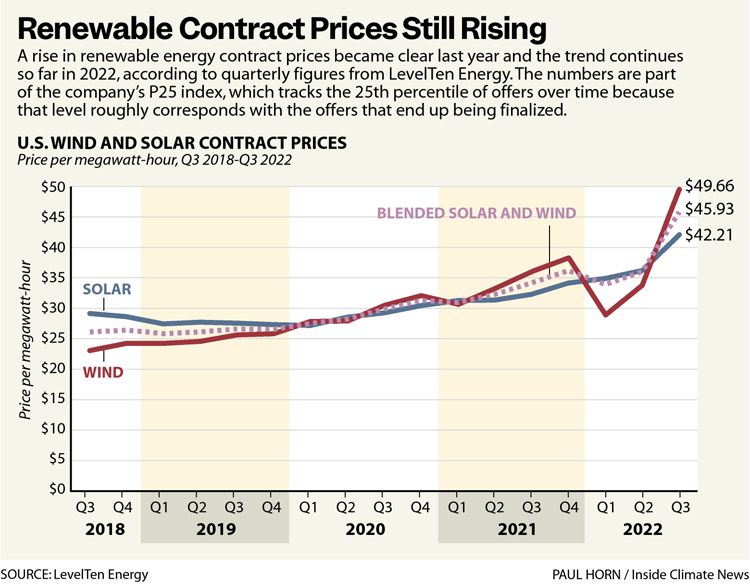How Is This Energy Radiated To Earth?
The Sun is by far the largest object in our solar system, containing 99.8% of the solar system’s mass. At its core, nuclear fusion converts hydrogen to helium, releasing an enormous amount of energy in the process. Every second, the Sun converts approximately 600 million tons of hydrogen into helium and radiates an amount of energy equal to almost a billion 1-megaton nuclear warheads. This energy propagates outward through the various layers of the Sun and is ultimately radiated into space in all directions. A tiny fraction of this energy radiated by the Sun strikes Earth, driving weather systems, ocean currents, photosynthesis, and providing the energy that sustains all life.
The Solar Core
The solar core is the innermost layer of the Sun and lies at its very center. This is where nuclear fusion takes place, converting hydrogen into helium. With temperatures reaching 15 million degrees Celsius, the solar core is where the Sun generates its enormous power output.
This process begins when intense heat and pressure in the core cause hydrogen nuclei to move so fast that they overcome electrostatic repulsion and fuse together. Four hydrogen nuclei fuse into one helium nucleus, releasing energy in the form of gamma ray photons according to Einstein’s famous equation E=mc2.
The fusion of just one gram of hydrogen in the core produces roughly 90,000 times as much energy as burning a gram of oil or coal. This provides the vast amounts of light and heat that radiate from the Sun to sustain life across the solar system. The Sun converts over 600 million tons of hydrogen into helium every second!
The Radiative Zone

The radiative zone is the region that extends from the core to about 70% of the way to the sun’s surface. In this zone, energy is transported by radiation, or photons. The extreme density in the core produces high temperatures and pressure that allows fusion reactions to occur. The photons released from these reactions can travel long distances through the sun without interacting with other particles. This allows the radiation to move outward gradually, taking about 170,000 years to pass through the radiative zone.
The temperature drops in the radiative zone from around 15 million Kelvin at the core down to about 2 million Kelvin at the upper boundary. The photons interact with the ionized plasma through absorption and re-emission. This slows the rate of energy transfer. Convection does not occur here because the plasma is too dense.
The radiative zone plays a key role in transferring the thermal energy generated by nuclear fusion in the core outward to the convective zone. This energy is then further transported to the sun’s surface before being radiated into space in the form of electromagnetic radiation and solar wind.
The Convective Zone
The convective zone of the sun lies directly above the radiative zone and extends from around 200,000 km below the sun’s visible surface up to the photosphere. This region makes up the outermost third of the sun’s mass.
The convective zone is characterized by the movement of hot and cool plasma. Plasma is heated at the bottom of the convective zone by the intense temperatures of the radiative zone below it. As the plasma heats up, it expands and becomes less dense than the plasma around it. This causes the hot plasma to rise to the upper layers of the convective zone in large circulating convection cells.
As the hot plasma rises and cools, it becomes denser and sinks back down through the convective zone where it is reheated by the radiative zone, creating a continuous convection cycle. The churning movement of hot plasma rising and cool plasma sinking drives the convective zone of the sun.
The Photosphere
The photosphere is the visible surface of the sun. It is the layer from which sunlight radiates into space. The photosphere is around 500 kilometers thick and has a temperature of approximately 5,700 kelvin. At the photosphere, the density and pressure of the sun’s gases produce a partially transparent layer. This allows us to see inside the sun’s atmosphere and observe sunspots and granules on the surface of the photosphere.
The structure of the photosphere consists of constantly shifting convective cells called granules, which are roughly 1,000 kilometers in diameter. These granules are the surface manifestation of convection currents that carry heat from the interior of the sun to the surface. The churning motion of the granules causes hot gases to rise to the surface while cooler gases sink. This motion forms bright cell walls and darker cell interiors.
Sunspots appear as dark spots on the photosphere and are areas where strong magnetic fields inhibit convection. This causes the spots to be cooler, around 4,000 kelvin compared to the average 5,700 kelvin temperature of the photosphere. The number of sunspots present on the photosphere varies over an approximately 11-year solar cycle.
Overall, the photosphere emits the sunlight we see and feel here on Earth. It is the layer that radiates the heat and light that warms our planet and makes life possible.
The Chromosphere
The chromosphere is a thin layer of the solar atmosphere that lies directly above the photosphere. With a thickness of only about 2,000 kilometers, the chromosphere makes up a very small fraction of the sun’s overall radius of 696,000 kilometers. Despite its thinness, the chromosphere plays an important role in the emission of solar radiation.
The chromosphere gets its reddish color from the prevalence of hydrogen-alpha emissions that occur within it. Temperatures in the chromosphere increase with altitude, ranging from about 4,500 Kelvin at the bottom near the photosphere to upwards of 100,000 Kelvin at the top bordering the transition region. These high temperatures cause plasma in the chromosphere to be much less dense than in the photosphere.
One of the most distinct features of the chromosphere are spicules, which are fountains of hot gas that constantly shoot up before falling back down. Spicules can reach heights of over 10,000 kilometers in just minutes. Other structures in the chromosphere include fibrils and mottles, which follow magnetic field lines emanating up from the photosphere. Overall, the dynamic nature of the chromosphere illustrates the atmosphere’s transition toward the swirling corona.
The Corona
The corona is the outermost layer of the Sun’s atmosphere. It extends millions of kilometers into outer space and can be seen during a total solar eclipse. The corona consists of highly rarefied gas with temperatures over 1 million degrees Celsius, which is much hotter than the layers below it. This extreme heating occurs because the corona is not in thermal equilibrium with the layers below it.
The high temperatures cause the corona to emit X-rays and expand continuously outward as the solar wind. Its expansion leads to the solar magnetic field stretching far into space and interacting with the Earth’s magnetosphere. The corona is normally only visible during a total solar eclipse when the Moon blocks the bright photosphere, allowing the corona to be seen surrounding the silhouette of the Moon.
Solar Radiation
The sun produces an enormous amount of energy in the form of electromagnetic radiation. This radiation is emitted across the entire electromagnetic spectrum, from radio waves to gamma rays. However, most of the sun’s radiation is concentrated in the visible, ultraviolet, and near-infrared parts of the spectrum.
Visible light from the sun allows us to see. But the sun also produces ultraviolet radiation, which has shorter wavelengths than visible light. Ultraviolet light from the sun is absorbed by the ozone layer in Earth’s upper atmosphere. Near-infrared radiation has slightly longer wavelengths than visible light. About half of the solar radiation reaching the ground is in the near-infrared part of the spectrum.
Different wavelengths of electromagnetic radiation have different amounts of energy. Gamma rays have the shortest wavelengths and the most energy, while radio waves have the longest wavelengths and the least energy. Visible light, ultraviolet radiation, and infrared radiation have progressively longer wavelengths and less energy than gamma rays and X-rays.
The sun’s peak radiation intensity occurs in the visible part of the spectrum. However, it emits radiation across a broad range of wavelengths at different intensities. This wide spectrum of radiation emitted by the sun is critical for life on Earth.
Absorption by Earth
The Earth’s atmosphere and surface absorb much of the solar radiation that reaches it. When the incoming solar radiation hits the top of the atmosphere, about 30% is reflected back into space by clouds, dust particles, and the Earth’s surface. The remaining 70% is absorbed by the atmosphere and the Earth’s surface.
Of the solar radiation absorbed, about 50% is absorbed by the Earth’s surface. The other 50% is absorbed by the atmosphere, including clouds and greenhouse gases like water vapor, carbon dioxide, and methane. These greenhouse gases capture radiation and prevent it from escaping the Earth’s atmosphere into space. This greenhouse effect helps regulate the Earth’s temperature and makes life possible.
Different areas of the Earth absorb solar radiation differently based on factors like latitude, elevation, cloud cover, and surface features like oceans versus vegetation. Areas like the tropics get hit with more direct radiation. Polar regions and mountains get less intense sunlight. The absorption patterns contribute to climates around the globe.
Effects on Earth
The Sun’s radiation has profound effects on Earth’s climate, life, and technology. Solar radiation is the primary driver of Earth’s climate system. Variations in the amount of radiation received from the Sun over timescales ranging from decades to millennia have produced cycles of climate change like ice ages. The warming of Earth’s surface and atmosphere by solar radiation enables life as we know it. Photosynthesis, powered by the Sun, supports nearly all life and the intricate food webs on Earth. Solar radiation also impacts technology and infrastructure which can be damaged by solar storms that accompany space weather events. The effects of solar radiation on Earth highlight how intricately connected our planet is to the Sun.




